The Ontario Occupational Health and Safety Act and the Ontario Regulations
« BackThe Ontario Occupational Health and Safety Act and the Ontario Regulations: What everyone needs to know By Paul Fooks Special to Ottawa Construction News The Occupational Health and Safety Act (OHSA) and the Ontario Regulations are in place to protect workers from direct injury, long term disabilities or death. Although some may complain about too many rules, most accidents happen because companies or workers were not following some basic regulations. The challenge for businesses is ensuring workers and supervisors understand and follow the rules. For all Ontario workers, the basic guidelines are found in the Occupational Health and Safety Act, R.S.O. 1990, c. O.1. An electronic copy can be found at www.labour.gov.on.cathrough the Ministry of Labour, including frequently asked questions. If you are an Ontario employer and have not visited this site you should start there to get the information to remain safe and compliant. The employer has the most responsibility to keep workers safe. There are many different aspects to the process, including:
This is not an all-inclusive list, just a basic overview of the employer’s responsibilities listed in OHSA Section 27. For example, supervisors need to ensure that workers follow the regulations, use prescribed protective equipment, are aware of the risks and how to protect themselves, and follow instructions. More details are prescribed in OHSA Section 28 of the OHSA and two regulations with different guidelines O. Reg. 213/91: Construction Projects and the R.R.O. 1990, Reg. 851: Industrial Establishments. Businesses need to determine which regulation applies by understanding the definitions. For example, “construction” includes erection, alteration, repair, dismantling, demolition, structural maintenance, painting, land clearing, earth moving, grading, excavating, trenching, digging, boring, drilling, blasting, or concreting, the installation of any machinery or plant, and any work or undertaking in connection with a project but does not include any work or undertaking underground in a mine; (construction) or an “industrial establishment” including a related office building, factory, arena, shop or office. Once the regulations that apply to the job site are identified, these need to be incorporated into a consolidated health and safety policy and program/ Then workers need to be trained, and the employer must monitor the health and safety program and adapt to changes as shortfalls are identified. As an employer, it is imperative to be familiar with the regulations. If you are not sure about what needs to be done or you are overwhelmed, engage a third party for support. With all the duties prescribed in the Act and the regulations, we should have a pretty good idea of what we should do to stay safe. Paul Fooks is Labor Tek Safety Training Inc.’s head trainer. For more information, visit www.labortek.comor phone (613) 741-1128. |







